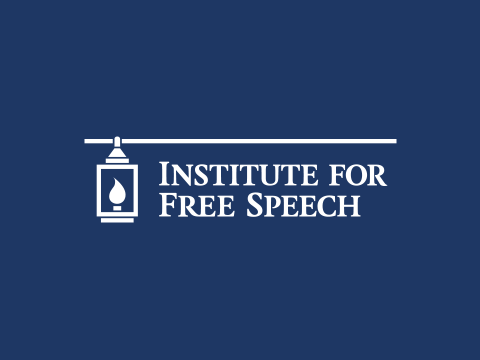Tony Corrado and Norm Ornstein, Bob Bauer, Tom Mann, and John Samples are having an interesting debate on McCain-Feingold. Mann and Corrado and Ornstein argue that the bill has been a success. All three having been involved in drafting the bill, that is to be expected. Samples and Bauer were critical of the bill before it was passed, and remain critical now.
We don’t want to recover ground these worthies have already covered. But I can’t resist at least a few comments.
First, it is important to remember that McCain-Feingold was sold to the public – including many members of Congress – a bit like a 19th century patent medicine: "It’s good for what ails ya’." The record is rife with comments that it will reduce negative campaigns; it will reduce corruption; it will get spending on campaigns under control. Think campaigns are too long? Support McCain-Feingold! Too much special interest influence? Support McCain-Feingold! Tired of political ads? Support McCain-Feingold! This is not really something that supporters of the bill can deny, even if, as with Corrado, Ornstein, and Mann, they themselves may not have made such arguments. The trio cannot have it both ways, taking every argument made against the bill that turned out to be wrong or overstated as proof that their critics are wrong, while denying the arguments made by others on the bill’s behalf that turn out to have been equally or more wrong or overstated. For example, the lead argument made by Ornstein and Corrado is that opponents said that the law would devastate political parties. But that was not, for example, a view I held, though I did argue that the bill would weaken political parties vis a vis other entities – independent 527s and 501 (c)(4) organizations – which I think appears to be true. Still, I would never suggest that the "devastation" argument was not an argument that other opponents of the bill often made.
Second, we are struck by the weakness of the arguments now made as justification for the bill. Let’s start with the party argument. Ornstein and Professor Corrado argue that parties are "richer, and stronger at the grassroots." For this, the only evidence they offer is that the parties are still raising lots of money, and from a broader donor base. We’re not sure how this really makes the parties stronger. They are almost certainly less important, vis a vis other political players, including 527s such as MoveOn and Swift Vets, labor unions, and 501(c)(4)s and (c)(5)s such as the Chamber of Commerce. Bauer and Samples point out how the parties are raising much less money than would be otherwise, even if it is about what they were raising pre-McCain-Feingold. What is worth noting here is that much of this is simply recategorizing what was once called "soft money" as "hard money." To a substantial extent, the soft money "problem" was always a hard money "problem." Contribution limits that were never adjusted for inflation meant that a gift of $25,000 in 1976 would require a donation of nearly $100,000 at the time McCain-Feingold was passed, just to have the same buying power. But because the hard money limit was still $25,000, the remaining $75,000 had to be given as "soft money." This was then vilified as "corrupting." McCain-Feingold finally raised this cap (though not enough to account for inflation, and over the opposition of much of the "reform" lobby), and all the old corrupt "soft money," now called "hard money," is seen as proof of success. Heck, if the difference between "corruption" and "parties stronger at the grassroots" is merely one of semantics, we might have been better off to have just raised the caps back in 1976.
In any case, we’re not exactly sure that the mere fact that the law did not "devastate" historically significant private institutions makes the law a success. It’s sort of like saying that the Katrina response has a been a model of disaster relief – after all, Tulane is still functioning! That money raised should be the standard seems to us rather, well, almost humorous. It shows the reformers’ obsession with money that that is the first argument they now trot out to justify the bill. Money is what makes politics bad; money is what makes politics good. And they say politicians are obsessed with cash!
The only other argument that Ornstein and Professor Corrado make is that the bill did not entrench incumbents – witness 2006. Pardon us if we’re not whelmed, let alone overwhelmed, by this argument. As Samples and Bauer point out, most experts believe that the Democrats left 10 to 20 or more potentially competitive seats on the table, because of McCain-Feingold. This seems intuitively obvious to us: 2006 was repeatedly described as the perfect political storm – a mid-term election in the President’s second term; an unpopular war; an extremely, even historically, unpopular president; the perception, if not the reality, of a weak economy; serious and multiple high profile episodes of outright corruption in the ruling party; and a disgruntled, unsatisfied base in the ruling party. Yet the Democrats gained barely half the seats that Republicans picked up in 1994, when there was not such a devastating confluence of factors. This comes on the heels, of course, of a 2004 election under McCain-Feingold in which incumbents were all but impregnable, except where district lines had been redrawn to their disfavor.
Mann (at least in the post cited) adds no positive arguments for McCain-Feingold being a success, but merely offers a few claims that the law hasn’t been as bad as Bauer and Samples claim. But Mann does add one other ingredient, a vaguely ad hominem attack in which he suggests that critics of McCain-Feingold are simply libertarian ideologues (who knew that DNC Counsel Joe Sandler was about to be appointed a fellow at the Cato Institute?) whereas he and his colleagues are centrists, basing their views on science and research. Samples effectively takes Mann to task for this – certainly Tom Mann, though a distinguished political scientist, has never written a book on campaign finance reform that includes as thorough an examination of the empirical evidence as Samples’ marvelous The Fallacy of Campaign Finance Reform, or even my own inferior work, Unfree Speech. Nor, we might point out, does Mann have Bauer’s experience in representing actual clients battling with the law (and Bauer, by the way, also has a book on campaign finance reform). Thus, we are to take it, if you will, on faith that Dr. Mann’s conclusions are those of a centrist social scientist focused on the empirical evidence, while his critics are ideologues who ignore the "empirical world."
In fact, as Samples points out, campaign finance reform is largely based on faith – the faith that money corrupts politicians, despite, for example, a woeful inability of political studies to find such corruption; or the argument that public funding will solve the problem, despite the failure of it to do so where it has been tried. Reformers have long had a tendency to resort to a type of intellectual bullying when their arguments start to go down, including aggressive attacks on the integrity of their opponents. But this type of posturing is wearing thin, and the effort to defend McCain-Feingold – an effort that, as Bauer notes, few will say and fewer still believe – will take a few more layers off the reformers’ credibility: The era of McCain-Feingold is the era of Jack Abramoff and Bob Ney; the era of "stand by your ad" is the era of MoveOn attack ads; and so it goes.
One can certainly still argue that campaign finance reform – whatever that means, since the meaning of reform seems to change regularly, the only constant being that deregulation is not "reform" – is a good idea. There are reasonable arguments for that proposition. But arguing that McCain-Feingold is proof of that ideological theory is probably not a smart place to start.












